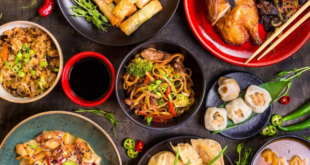Introduction
The culinary world is witnessing a dynamic fusion where the vibrant flavors of global street food meet the elegance of fine dining. This convergence is reshaping gastronomic experiences, offering diners innovative dishes that honor traditional roots while embracing contemporary techniques.
The Allure of Street Food
Street food serves as a cultural tapestry, weaving together diverse flavors, traditions, and stories from around the world. From Bangkok’s bustling markets to the lively streets of Mexico City, these foods provide an authentic taste of local life. Their popularity stems from their ability to connect people through shared, relatable flavors.
Integration into Fine Dining
In recent years, upscale restaurants have begun incorporating elements of street food into their menus, signaling a merging of casual and sophisticated culinary traditions. This trend allows chefs to showcase creativity while honoring cultural heritage. For instance, Chef Dennis Llusco of La Rufina in La Paz, Bolivia, elevates traditional street dishes like “anticucho” (grilled beef heart) to haute cuisine, offering diners a refined taste of Bolivian street fare.
Michelin Recognition
The Michelin Guide, traditionally reserved for fine dining establishments, has expanded its scope to include exceptional street food vendors. In 2016, Singapore’s Hawker Chan became the first street food stall to receive a Michelin star, highlighting the exceptional quality and flavor found in humble street offerings.
Culinary Innovation and Fusion
The blending of street food with fine dining has led to innovative culinary creations. Chefs experiment with traditional recipes, incorporating modern techniques and presentations. This fusion not only preserves the authenticity of street flavors but also introduces them to a broader audience in a sophisticated setting.
Case Studies of Successful Integration
La Rufina, La Paz, Bolivia: Chef Llusco transforms traditional Bolivian street dishes into fine dining experiences, attracting both locals and tourists seeking authentic flavors presented with elegance.
Urban Hawker, New York City: Inspired by Singapore’s hawker centers, this food hall brings together diverse street food vendors under one roof, offering a taste of global street cuisine in a modern setting.
Challenges and Considerations
While the fusion of street food and fine dining offers exciting possibilities, it also presents challenges. Maintaining the authenticity of traditional flavors while meeting the expectations of fine dining requires careful balancing. Additionally, chefs must navigate cultural sensitivities to ensure respectful and accurate representations of various cuisines.
Conclusion
The intersection of global street food and fine dining enriches the culinary landscape, offering diners diverse and innovative experiences that honor tradition while embracing modernity. This fusion reflects a broader trend of cultural appreciation and gastronomic exploration, inviting all to partake in a global culinary journey.
For more insights into the evolving world of global cuisines, visit 365Tastes.
 Tastes | Live healthy every day
Tastes | Live healthy every day

